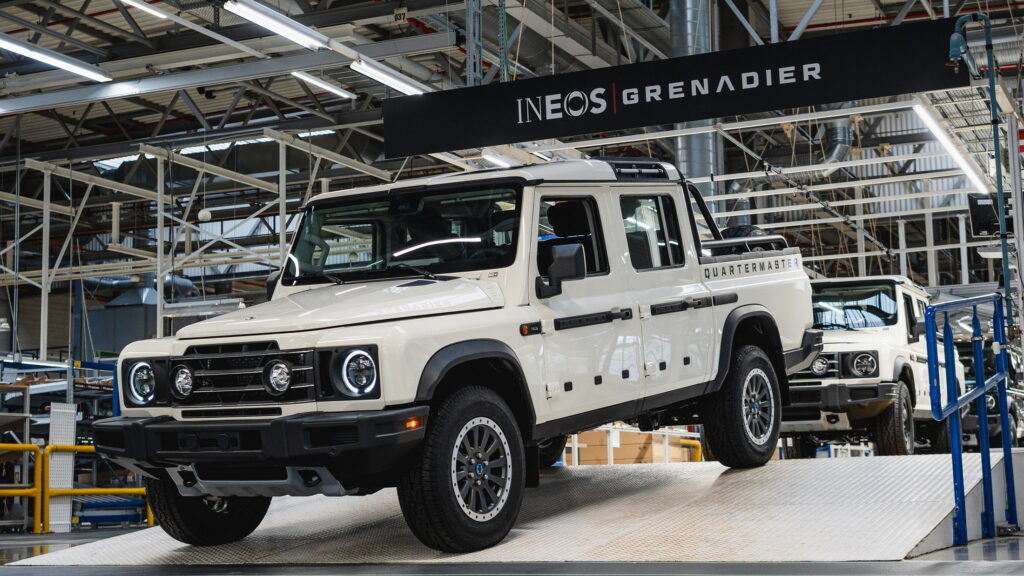- The Ineos Grenadier Quartermaster is a pickup truck, so it only makes sense to sell it to Americans.
- To do that, the automaker is considering opening a manufacturing plant in the U.S. to get around the Chicken Tax.
- The company is also looking at the future of powertrains, but isn’t convinced by e-fuels and hydrogen. Not yet, anyway.
The Ineos Grenadier off-roader may only be faintly familiar to American readers, but the automaker believes that the pickup truck version, the Grenadier Quartermaster, could be a hit with U.S. consumers, and may look to manufacture the model in the country.
Currently, Ineos makes its vehicles at a former Mercedes facility in France, and is on track to sell about 30,000 units this year. But the company wants to grow, and part of that growth means looking for another production facility.
Read: Ineos Grenadier Quartermaster Is A Pricey Pickup That Starts From $86,900
Speaking at the Financial Times Future of the Car Summit in London, Ineos Automotive CEO Lynn Calder confirmed that the startup is “absolutely” interested in opening a manufacturing plant in the U.S., reports Motor Trend. The young automaker is also looking at a facility in China, but admits that American duties on imported trucks may make that difficult.
In addition to reaching new markets, Ineos also wants to reach new buyers by expanding its lineup. On top of the Grenadier and the Grenadier Quartermaster, the automaker has unveiled the Fusilier, a smaller off-road SUV, and is planning another two new off-road focused SUVs in the near future.
Speaking in London, Calder revealed little about the models, but did say that one will be bigger than the Grenadier and the other will be smaller. She also hinted that the new vehicles could be built on platforms that accommodate multiple powertrain types.

That would make the new models similar to the Fusilier, whose wheels will be exclusively powered by electric motors, but which can be equipped with a gas engine that serves as a generator to refill the batteries, and will offer as much as 250 miles (402 km) of range when it goes on sale in 2027.
Although it’s not guaranteed that the new models will be hybrids, it seems unlikely that they’ll use an alternative such as e-fuels or hydrogen, considering how unconvinced Calder sounded by the technology at the London summit.
“At the moment, there’s just not enough e-fuel to go around, and it’s going to be extremely expensive,” said Calder. “It feels like it’s a long way off in terms of having sufficient fuel to imagine keeping a combustion engine fleet alive at a total cost of ownership for customers that would be acceptable. We’re not discounting it, we’re interested. We’re a bit more invested in hydrogen, but we think it’s also a long way off because of infrastructure.”
Even with the new models, and a potential new manufacturing location, Ineos doesn’t want to expand beyond what it does best. Calder said she wants the company to stay focused on off-roading: “We want to stick to what we know but get bigger.”





